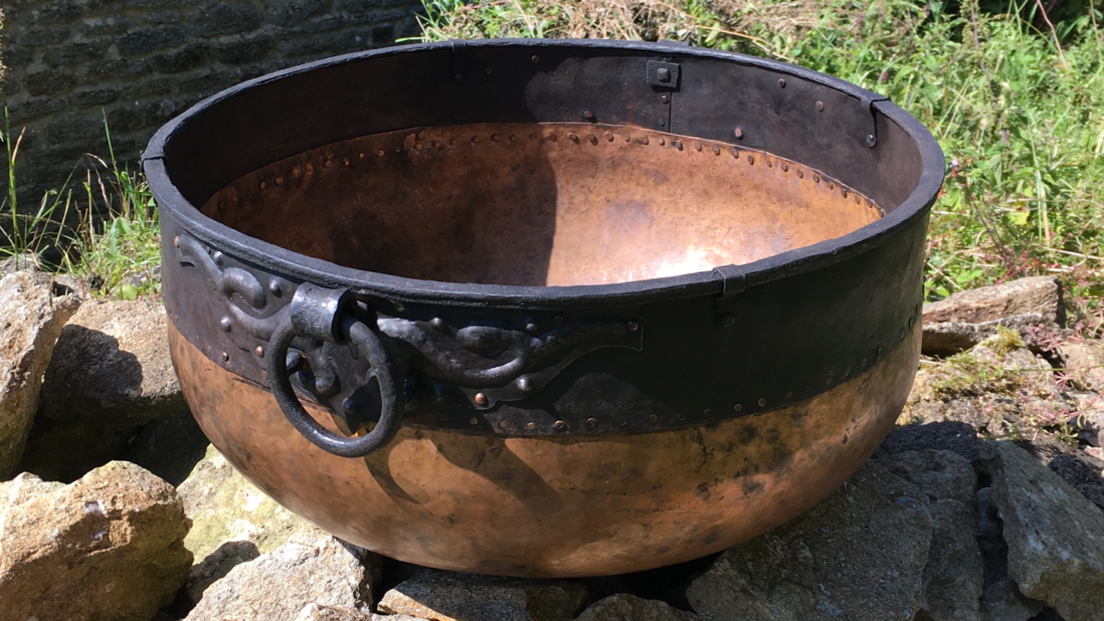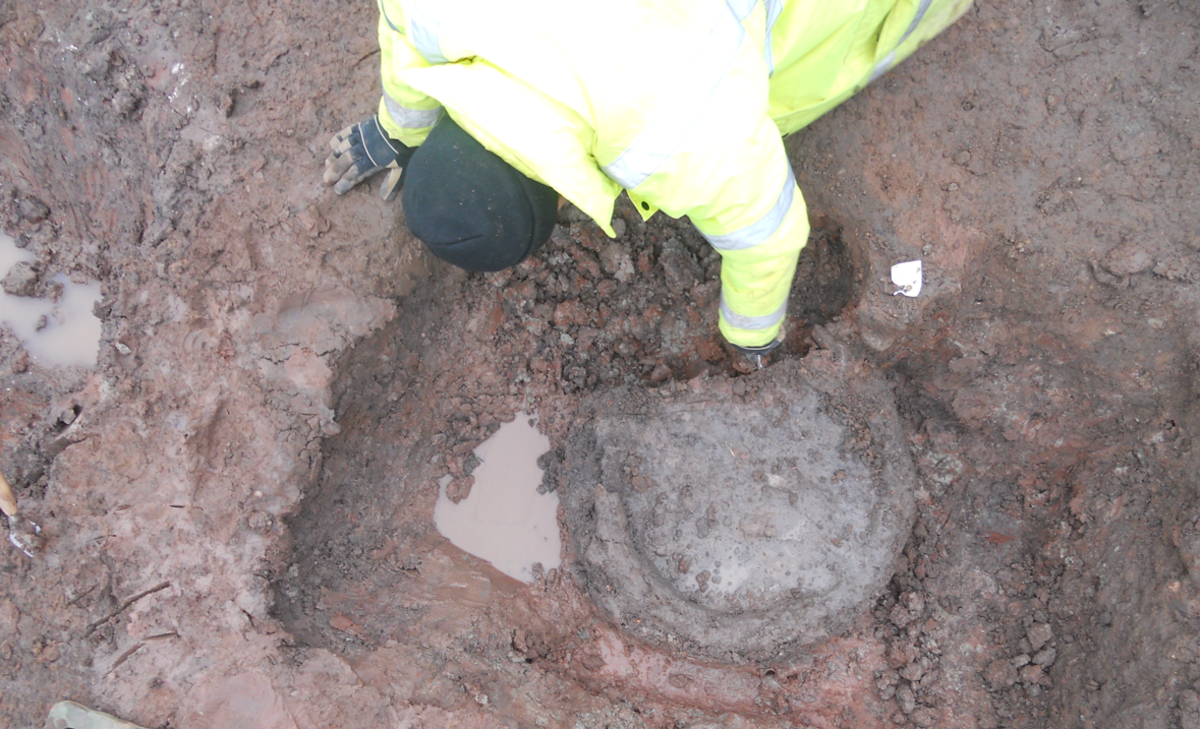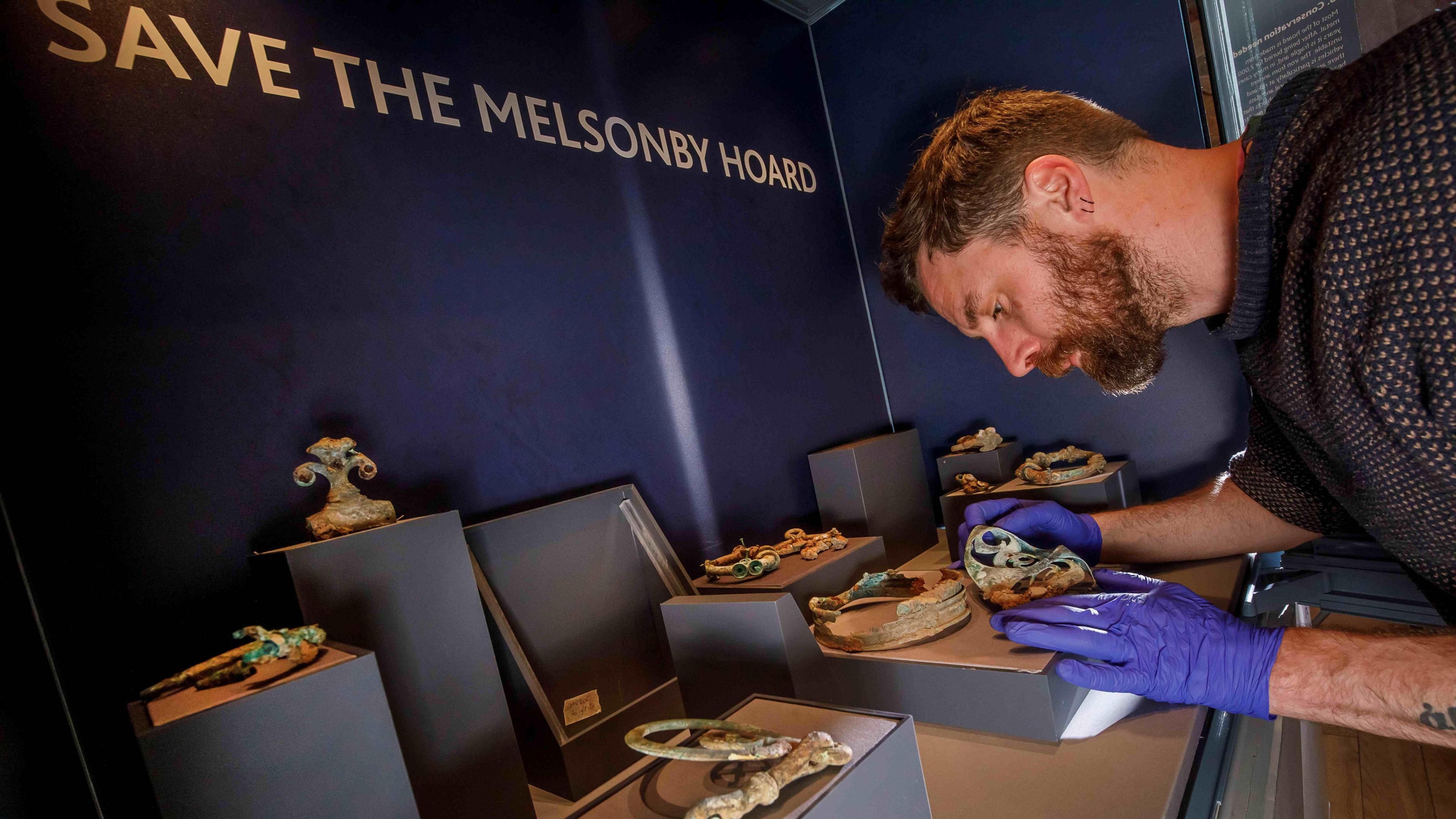Replica cauldron sheds light on Iron Age life

The creation of the cauldron has shed light on the work of Iron Age metalworkers, experts said
- Published
A replica of a 2,400-year-old cauldron has been forged to help archaeologists shed light on how people lived during the Iron Age.
Experts said the vessel, made from copper alloy and iron, was a near-perfect copy of ancient cauldrons dug up in an excavation of a prehistoric site at Glenfield Park near Leicester.
The remains of 11 fragile and corroded cauldrons were among a treasure trove of metalwork, including a sword, pins and a brooch, found by a team from the University of Leicester in 2013.
Academics, who unveiled the replica cauldron on Thursday, said its creation had shed light on the feasting habits and metalworking skills of people who lived nearly two-and-a-half millennia ago.
Delicate fragments of the cauldrons were examined in painstaking detail by a specialist from the Museum of London Archaeology (MOLA) , externalto help with forging the replica.
MOLA's senior conservator Liz Barham said: "The conservation of the Glenfield Park cauldrons through detailed recording, sampling and integration with scientific analysis has revealed many new insights into their manufacture, repair and use in their working life, building on work with earlier cauldron discoveries.
"Despite their crushed and corroded condition, conservators have been able to identify many details to contribute to research, to inform the making of a replica, and perhaps provide a glimpse of the Iron Age communities that made, used, and finally discarded them."
She said the conservation and scientific work uncovered revealed the use of sophisticated techniques to shape the original thin copper bowl.
She also said patches on the cauldrons showed mishaps occurred during their production, but also that once in use, they were carefully maintained and had long lives, indicating their importance to the community that used them.

Ironworker Hector Cole created ring handles for the replica
University of Leicester Archaeological Services deputy director John Thomas said: "Cauldrons are substantial vessels associated with large gatherings and feasts, and the Glenfield examples are no exception, with capacities ranging between 15 and 57 litres, they could have catered for several hundred people if all used at the same time.
"They must have been an important part of the feasting activities associated with this settlement, but after a long period of use, they were eventually buried in areas across the site for unknown reasons.
"This is the first time we have discovered such clear evidence for ancient feasting in Leicestershire, and the results of the project will be important for understanding the social aspects of Iron Age communities in the Midlands and beyond.''

The cauldrons were excavated at a site where a warehouse complex was later built
Archaeological ironworker Hector Cole was commissioned to forge the replica cauldron.
"The forging of the cauldrons was a steep learning curve for me to put myself into the minds of the people who made the original cauldrons," he said.
The technical skills they used were of the highest order and, in my opinion, they were specialist cauldron makers of their time.
"Today it is so easy to mechanically punch or drill holes to a particular diameter, and yet they were doing the same in bronze and iron with great precision.
"They were also fully aware of the fact that 'creep' needs to be taken into consideration when putting the two main parts together with so many rivets.
"Do it in the wrong order and you end up with a distorted shape that cannot be corrected. I was fortunate enough to know the correct technique to enable me to put the cauldrons together with no mistakes.
"I have great respect for the Iron Age metalworkers and would like to think that my efforts came up to their standards of workmanship.''
The replica cauldron has been put on display at the Jewry Wall, which opened in July.
Get in touch
Tell us which stories we should cover in Leicester
Follow BBC Leicester on Facebook, external, on X, external, or on Instagram, external. Send your story ideas to eastmidsnews@bbc.co.uk, external or via WhatsApp, external on 0808 100 2210.
Related topics
- Published29 July

- Published25 March

- Published10 January 2023
